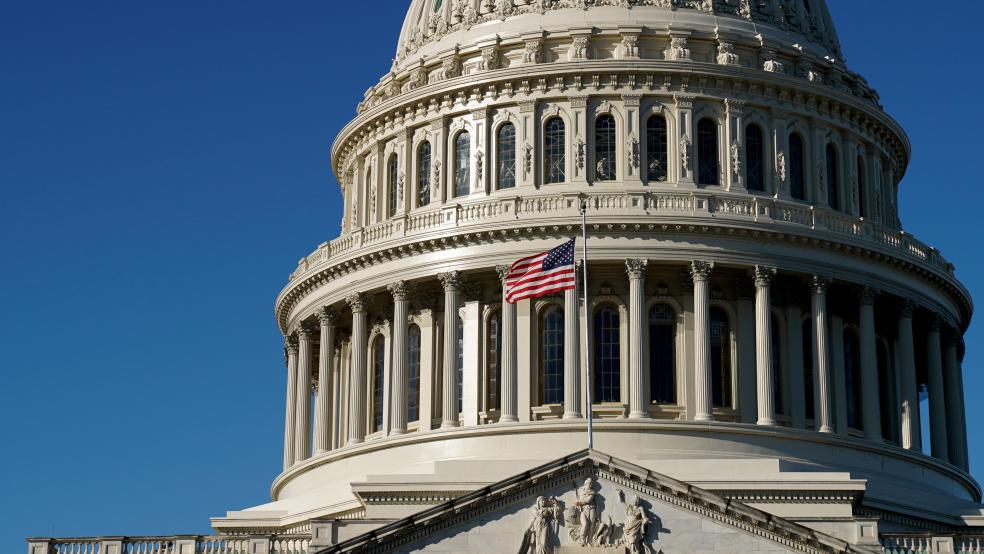The drawn-out drama of funding the government for the fiscal year that started more than five months ago is nearing its final act. With apologies to Samuel Beckett, you could call it “Waiting for the Dough,” though in this case, the dough may actually show!
Congressional leaders on Sunday released a six-bill government funding package that runs 1,050 pages long and provides more than $459 billion for the departments and agencies covered by the measures included: Agriculture, Commerce-Justice-Science, Energy-Water, Interior-Environment, Military Construction-Veterans Affairs and Transportation-Housing and Urban Development.
What’s in the bills: The total represents less than 30% of the nearly $1.66 trillion in discretionary spending that congressional leaders have agreed to for the year, but the bulk of that spending will be covered by the next batch of six spending bills, which lawmakers aim to pass before a March 22 deadline. In all, lawmakers have agreed to spend $704 billion in the non-military portion of the discretionary budget this year, plus a $69 billion “side deal,” while the defense budget will be $886 billion.
Combined, the spending bills would keep spending for the discretionary portion of the federal budget roughly flat, with some adjustments, including a boost for veterans’ spending and a $1 billion increase for the federal nutrition program for low-income women, infants and children, known as WIC. According to Roll Call, federal programs covered by the bills will see a $1.5 billion boost compared to the year before – an increase of 0.3%.
The plan for the current package calls for House lawmakers to get 72 hours to review the text before a vote on Wednesday, with the Senate to act after that. The House vote will be under suspension of the rules, meaning it will require a two-thirds majority to pass, and Democrats are expected to deliver a large portion of the necessary votes.
Lots of spin, no huge wins: Lawmakers from both parties claimed wins in the bills, though conservatives are extremely frustrated by the lack of deeper spending cuts or right-wing policy victories, and it’s unclear as of now whether a majority of House Republicans will back this package.
House Speaker Mike Johnson, who had previously told his members that the spending bills would not contain conservative home runs but would include some Republican singles and doubles, touted the contents of the package.
“Even with divided government and a historically small House majority, House Republicans have worked hard to successfully move the policy and spending priorities of the federal government away from the previous Pelosi-Schumer FY23 appropriations, and American taxpayers will benefit from it,” he said in a statement. “House Republicans secured key conservative policy victories, rejected left-wing proposals, and imposed sharp cuts to agencies and programs critical to the President Biden’s agenda.”
Among the victories cited by Johnson: what he described as “deep cuts to the EPA, ATF, and FBI” as well as a provision strengthening gun rights for veterans who are incapable of managing their own finances. But as Punchbowl News noted Monday, some of the spending cuts are not as significant as they first appear. A 7% cut to the FBI budget largely reflects the fact that a previous earmark of $600 million for a facility in Alabama will not be repeated, due in part to the retirement of the project’s champion, former Sen. Richard Shelby. And a 10% cut to the EPA budget, which largely hits the Superfund program, will be made up in part by new funding gained from the Bipartisan Infrastructure Law and the Inflation Reduction Act.
“The final Fiscal Year 2024 appropriations bills achieve what we set out to do: strategically increase defense spending and make targeted cuts to wasteful non-defense programs,” House Appropriations Chair Kay Granger, a Texas Republican, said in a statement.
Democrats also cited wins in the package, including the defeat of many of the “poison pill” policy riders sought by Republicans, such as stricter limits on funding for women’s health care. In terms of spending, Democrats secured $7 billion for WIC, enough to fully fund the program, which Republicans had sought to cut.
“Throughout the negotiations, Democrats fought hard to protect against cuts to housing and nutrition programs, and keep out harmful provisions that would further restrict access to women’s health, or roll back the progress we’ve made to fight climate change,” said Senate Majority Leader Chuck Schumer, a New York Democrat.
For more details on the massive spending package – which includes everything from $19.1 billion for the Department of Energy to support the ongoing modernization of nuclear weapons to $12.7 billion in earmarks targeting thousands of lawmakers’ pet projects — see the Republican highlights here and the Democratic highlights here. Politico also has a deep dive into the provisions related to energy and the environment here.
Budget
Congress Unveils $460 Billion Funding Package: What's Inside?

Reuters/Erin Scott




